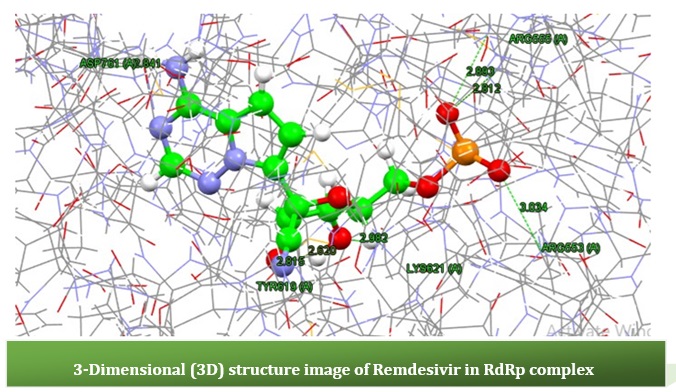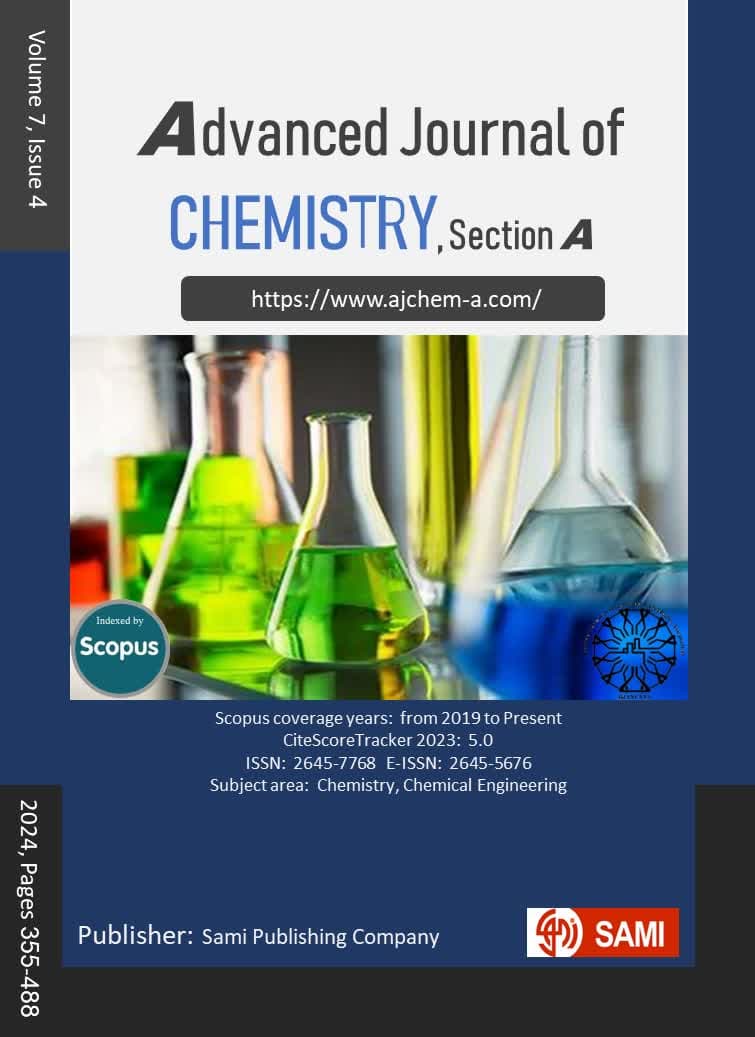[1] H. Al-Hussaniy, The development of molecular docking and molecular dynamics and their application in the field of chemistry and computer simulation,
Journal of Medical Pharmaceutical and Allied Sciences,
2023,
12, 5552-5562. [
Crossref], [
Google Scholar], [
Publisher]
[2] M. Awad, H.A. Al-Hussaniy, A.H. Alburghaif, K.T. Tawfeeq, The role of COVID-19 in myopathy: incidence, causes, treatment, and prevention,
Journal of Medicine and Life,
2022,
15, 1458. [
Crossref], [
Google Scholar], [
Publisher]
[3] O.D. Salman, S.K. Ibrahim, R.G. Rashid, H.A. Al-Hussaniy, The role of laboratory test biomarkers in diagnosis, risk assessment, and monitoring of COVID-19 patients,
Journal of Clinical Trials and Experimental Investigations,
2023,
2, 7-14. [
Crossref], [
Google Scholar], [
Publisher]
[4] H.M. Al-Kuraishy, A.I. Al-Gareeb, H.A. Al-Hussaniy, N.A.H. Al-Harcan, A. Alexiou, G.E.-S. Batiha, Neutrophil Extracellular Traps (NETs) and Covid-19: A new frontiers for therapeutic modality,
International Immunopharmacology,
2022,
104, 108516. [
Crossref], [
Google Scholar], [
Publisher]
[5] M.A. ALZobaidy, A.H. AlbuRghaif, H.A. Alhasany, M.A. Naji, Angiotensin-converting enzyme inhibitors may increase risk of severe COVID-19 infection,
Annals of the Romanian Society for Cell Biology,
2021,
25, 17843-17849. [
Google Scholar], [
Publisher]
[6] M.A. Rohaim, R.F. El Naggar, E. Clayton, M. Munir, Structural and functional insights into non-structural proteins of coronaviruses,
Microbial Pathogenesis,
2021,
150, 104641. [
Crossref], [
Google Scholar], [
Publisher]
[7] M.J. Islam, N.N. Islam, M.S. Alom, M. Kabir, M.A. Halim, A review on structural, non-structural, and accessory proteins of SARS-CoV-2: Highlighting drug target sites,
Immunobiology,
2023,
228, 152302. [
Crossref], [
Google Scholar], [
Publisher]
[8] M. de Vries, A.S. Mohamed, R.A. Prescott, A.M. Valero-Jimenez, L. Desvignes, R. O’Connor, C. Steppan, J.C. Devlin, E. Ivanova, A. Herrera, A comparative analysis of SARS-CoV-2 antivirals characterizes 3CLpro inhibitor PF-00835231 as a potential new treatment for COVID-19,
Journal of Virology,
2021,
95, 10.1128/jvi. 01819-01820. [
Crossref], [
Google Scholar], [
Publisher]
[9] R. Cannalire, C. Cerchia, A.R. Beccari, F.S. Di Leva, V. Summa, Targeting SARS-CoV-2 proteases and polymerase for COVID-19 treatment: state of the art and future opportunities,
Journal of Medicinal Chemistry,
2020,
65, 2716-2746. [
Crossref], [
Google Scholar], [
Publisher]
[10] Y. Jiang, W. Yin, H.E. Xu, RNA-dependent RNA polymerase: Structure, mechanism, and drug discovery for COVID-19,
Biochemical and Biophysical Research Communications,
2021,
538, 47-53. [
Crossref], [
Google Scholar], [
Publisher]
[11] A.J. Te Velthuis, J.J. Arnold, C.E. Cameron, S.H. Van Den Worm, E.J. Snijder, The RNA polymerase activity of SARS-coronavirus nsp12 is primer dependent,
Nucleic Acids Research,
2010,
38, 203-214. [
Crossref], [
Google Scholar], [
Publisher]
[12] H. Slanina, R. Madhugiri, G. Bylapudi, K. Schultheiß, N. Karl, A. Gulyaeva, A.E. Gorbalenya, U. Linne, J. Ziebuhr, Coronavirus replication–transcription complex,
Proceedings of the National Academy of Sciences of the United States of America,
2021,
118, 1-12. [
Google Scholar], [
Publisher]
[13] S.O. Aftab, M.Z. Ghouri, M.U. Masood, Z. Haider, Z. Khan, A. Ahmad, N. Munawar, Analysis of SARS-CoV-2 RNA-dependent RNA polymerase as a potential therapeutic drug target using a computational approach,
Journal of Translational Medicine,
2020,
18, 1-15. [
Crossref], [
Google Scholar], [
Publisher]
[14] C.M. Daczkowski, J.V. Dzimianski, J.R. Clasman, O. Goodwin, A.D. Mesecar, S.D. Pegan, Structural insights into the interaction of coronavirus papain-like proteases and interferon-stimulated gene product 15 from different species,
Journal of molecular biology,
2017,
429, 1661-1683. [
Crossref], [
Google Scholar], [
Publisher]
[15] P. Ren, S. Li, S. Wang, X. Zhang, F. Bai, Computer-Aided Prediction of the Interactions of Viral Proteases with Antiviral Drugs: Antiviral Potential of Broad-Spectrum Drugs,
Molecules,
2023,
29, 225. [
Crossref], [
Google Scholar], [
Publisher]
[16] D. Jade, A. Alzahrani, W. Critchley, S. Ponnambalam, M.A. Harrison, Identification of FDA-approved drugs against SARS-CoV-2 RNA-dependent RNA polymerase (RdRp) through computational virtual screening,
Structural Chemistry,
2023,
34, 1005-1019. [
Crossref], [
Google Scholar], [
Publisher]
[17] S. Joy, P.S. Nair, R. Hariharan, M.R. Pillai, Detailed comparison of the protein-ligand docking efficiencies of GOLD, a commercial package and ArgusLab, a licensable freeware,
In Silico Biology,
2006,
6, 601-605. [
Google Scholar], [
Publisher]
[18] A.A. Adeniyi, P.A. Ajibade, Comparing the suitability of autodock, gold and glide for the docking and predicting the possible targets of Ru (II)-based complexes as anticancer agents,
Molecules,
2013,
18, 3760-3778. [
Crossref], [
Google Scholar], [
Publisher]
[19] M. Jwaid, Design, Synthesis, Molecular Docking and Antifungal Evaluation of Mixed Heterocyclic Moieties Containing Pyridine, 1, 3, 4-Oxadiazole and 1, 2, 3-Triazol Rings,
International Journal of Drug Delivery Technology,
2022,
12, 705-710. [
Google Scholar]
[20] R.R. Altalebi, H.A. Al-Hussaniy, Z.S. Al-Tameemi, M.A.H. Al-Zobaidy, A.H. Albu-Rghaif, H.M. Alkuraishy, G.M. Hedeab, F. Azam, A.M. Al-Samydai, M.A. Naji, Non-alcoholic fatty liver disease: relation to juvenile obesity, lipid profile, and hepatic enzymes,
Journal of Medicine and Life,
2023,
16, 42. [
Crossref], [
Google Scholar], [
Publisher]
[21] T. da Silva Arouche, A.Y. Martins, T. de Castro Ramalho, R.N.C. Júnior, F.L.P. Costa, T.S. de Andrade Filho, A.M.J.C. Neto, Molecular Docking of Azithromycin, Ritonavir, Lopinavir, Oseltamivir, Ivermectin and Heparin Interacting with Coronavirus Disease 2019 Main and Severe Acute Respiratory Syndrome Coronavirus-2 3C-Like Proteases,
Journal of Nanoscience and Nanotechnology,
2021,
21, 2075-2089. [
Crossref], [
Google Scholar], [
Publisher]
[22] H.A. AL-Hussaniy, Z.S. AL-Tameemi, B.A. AL-Zubaidi, A.I. Oraibi, F.A. NAJI, S. Kilani, Pharmacological properties of Spirulina species: Hepatoprotective, antioxidant and anticancer effects,
Farmacia,
2023,
71, 670-678. [
Crossref], [
Google Scholar], [
PDF]
[23] A. John, A. Ebune, I. Aderemi, A. Moyosore, G. Idah, Theoretical Investigation and Design of Novel Anti-proliferative Agents against Hepatocellular Carcinoma from Benzimidazole-Chalcone derivatives,
Advanced Journal of Chemistry-Section A,
2023,
6, 92. [
Crossref], [
Google Scholar], [
Publisher]
[24] Velmurugan, B. A., Sivaraman, B., Natarajan, R., Nagarajan, N. Molecular docking studies on phytoconstituents of kabasura kudineer-a siddha formulation on corona protease enzyme.
Asian Journal of Green Chemistry,
2022, 6, 48-67. [
Crossref], [
Publisher]
[25] S.A. Amer, A. Al-Zahrani, E.A. Imam, E.M. Ishteiwy, I.F. Djelleb, L.R. Abdullh, D. Ballaj, Y.A. Amer, R.H. El-Sokkary, A.M. Elshabrawy, G. Eskander, Exploring the reported adverse effects of COVID-19 vaccines among vaccinated Arab populations: a multi-national survey study,
Scientific Reports,
2024,
14, 4785. [
Crossref], [
Google Scholar], [
Publisher]
[26] V.L. Kouznetsova, A. Zhang, M. Tatineni, M.A. Miller, I.F. Tsigelny, Potential COVID-19 papain-like protease PLpro inhibitors: repurposing FDA-approved drugs,
PeerJ,
2020,
8, e9965. [
Crossref], [
Google Scholar], [
Publisher]


